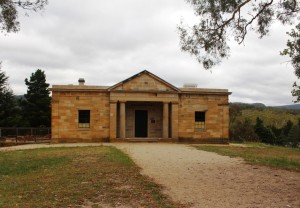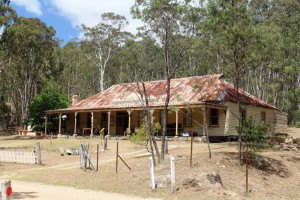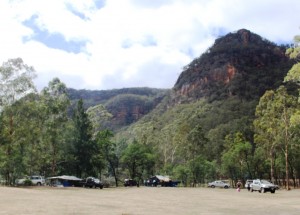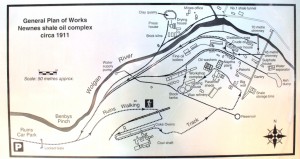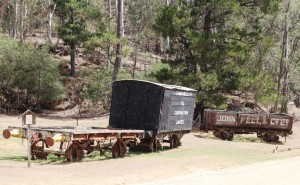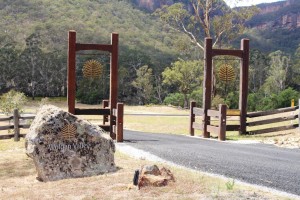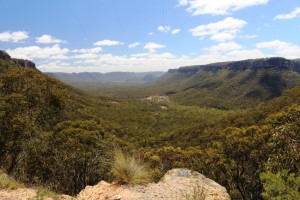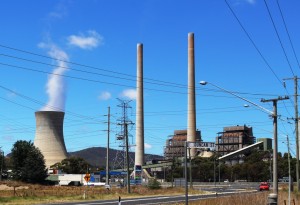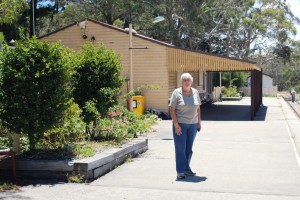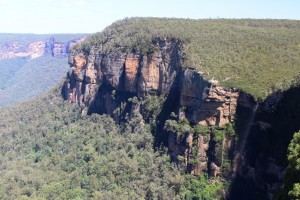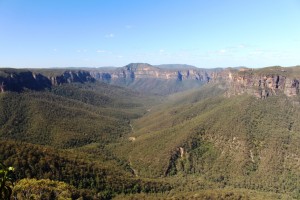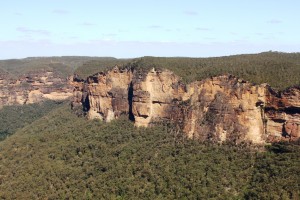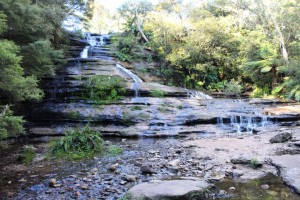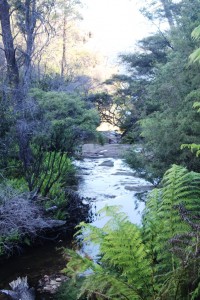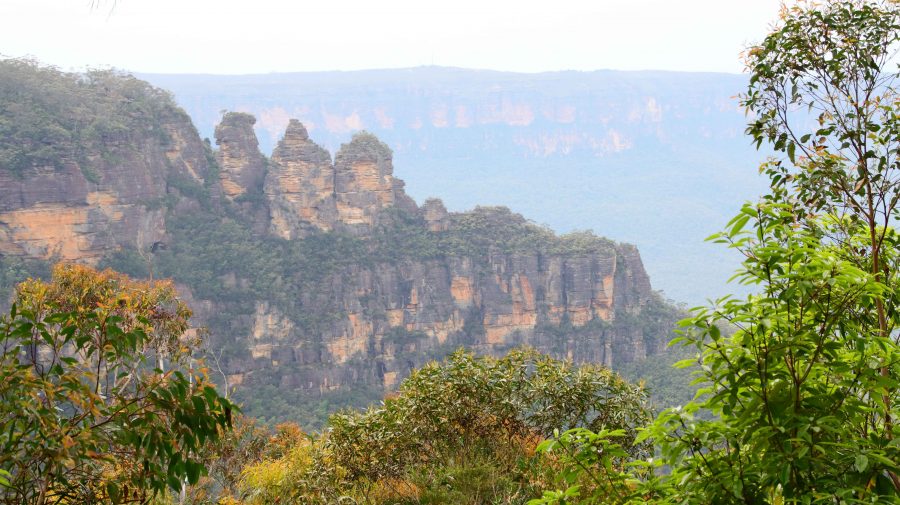
Wednesday was a day out of the tourist brochure, but Thursday dawned with total cloud cover. Happily, rain held off until about 3.00 PM. Aileen had had another bad night with her back and needed the services of another chiropractor. She found an appointment in Blackheath at mid-day. That left us with a morning to fill in.
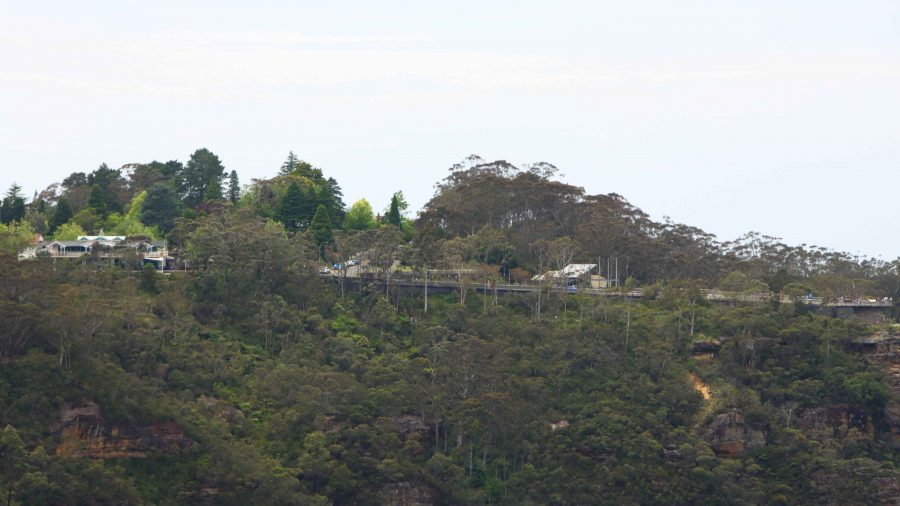
We returned to Katoomba to drive some of the cliff top roads that provide views to the Jameson Valley. It was more of the same from the two previous days, but Blue Mountain scenery can stand some repeats. We stopped at a couple of lookouts, but the heavy cloud meant that the colours were subdued and nowhere near their best.
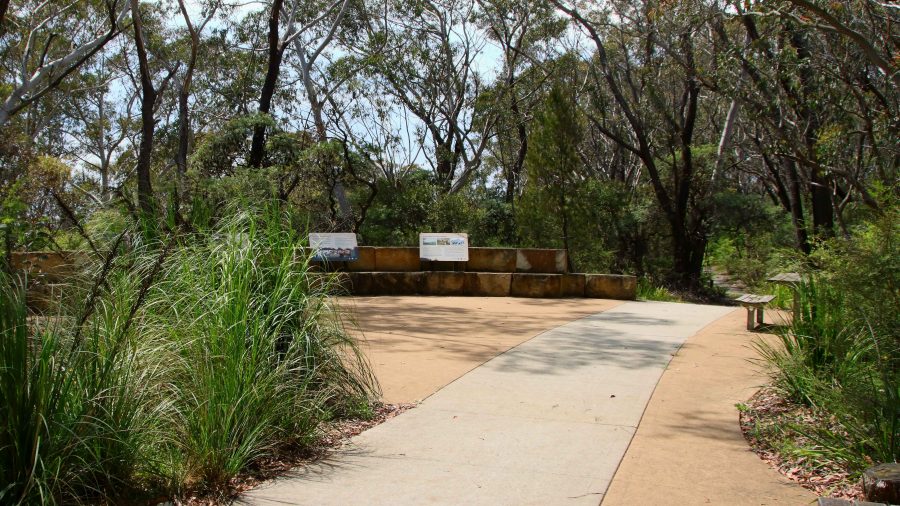
For some older scenery we returned to the old site of Explorers Tree and confirmed that the rellick was no longer there. But on the other hand we did discover the Katoomba end of The Six Foot Track. It now begins at an eco-cultural plaza, I guess you would call it, with history and Aboriginal culture sharing prominence. The quality of the trail head path does not continue very far.
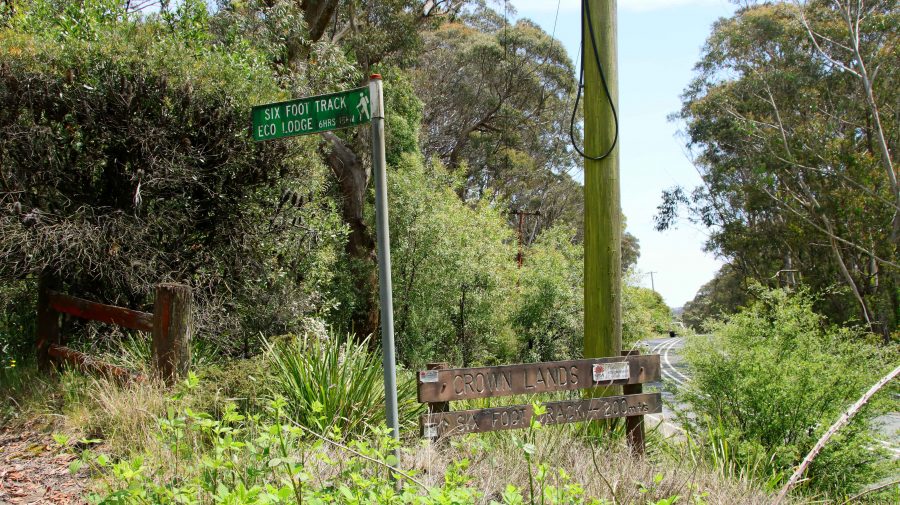
We returned to Blackheath for Aileen to subject herself to another pummelling. Then lunch at a gourmet sandwich shop in the main street of Blackheath. Different and very tasty.
Sadly, this is where my photos of the Blue Mountains end. I took some shots at Mount Wilson and on the way down the mountain to Lithgow but they are not on my camera or phone. It is a mystery.
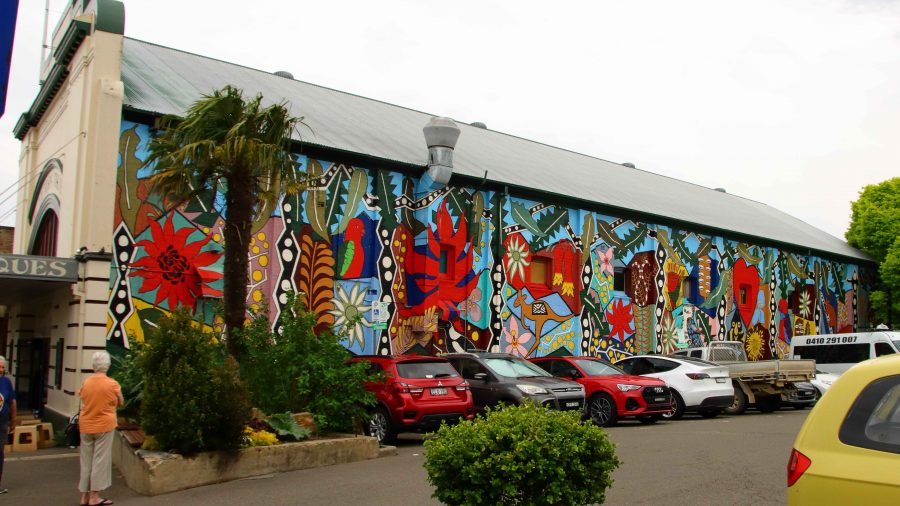
We still had an afternoon to fill. The last time that Ruth and had driven west to east over the Blue Mountains we had used the Bells Line of Road, the main link between Lithgow and Richmond on the Nepean River. I had noticed a turn to the left east of the small town of Bell, to Mount Wilson. This small town became our destination.
From Blackheath we had a 32 km drive, the last 10 km or so on winding mountain roads. We found that we were in an area not unlike some of the less developed parts of the Dandenong Ranges in Victoria. The area is elevated with roads leading to large acreages blocks containing substantial houses with extensive gardens.
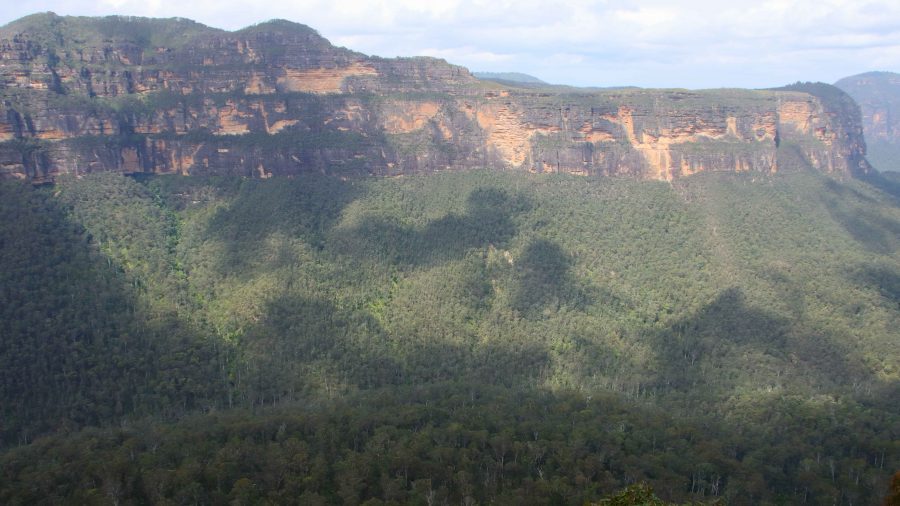
There is a small commercial centre but no one was there. The area offers a number of walks but it would require a much better day to entice me onto any of them. At least we now know what is there.
Returning to Bell, we continued on towards Lithgow, hoping to take a look at the Zig Zag Railway, the heritage listed original railway that climbed the mountain from Lithgow. When I planned the trip, a ride on the railway was to have been on our itinerary, until I discovered that the train only operated on Friday to Monday. Rain had started by the time we reached Clarence Station, the top station of the Zig Zag Railway, so we drove past.
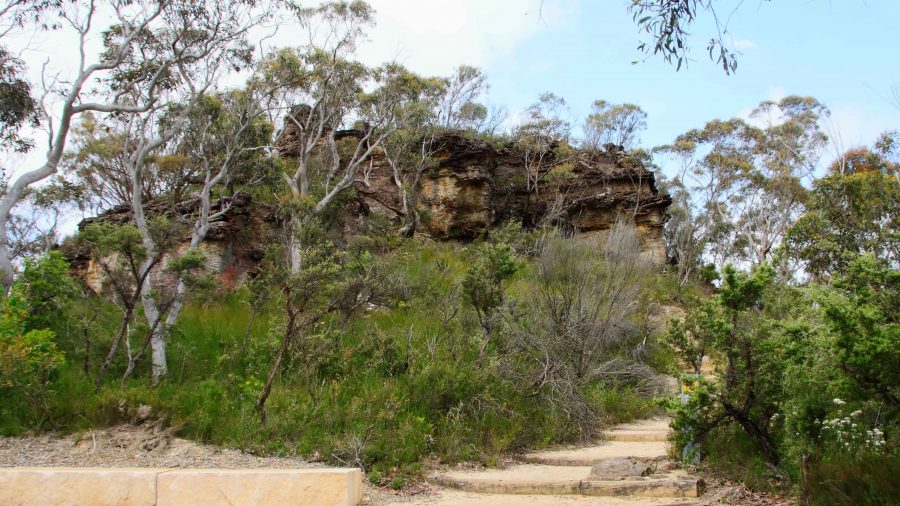
To cover new territory, we continued down the mountain to Lithgow, returning to Blackheath via Hartley and the Mount Victoria Pass. Beside the highway, we could see the new road being constructed, towards the base of the mountain where the tunnel will start.
Each time we drove to or from Katoomba we passed, in Blackheath main street, the Blackheath fish and chip shop. We subsequently discovered that the shop had opened about a year after Ruth and I had honeymooned in Katoomba. So, when dinner time approach Bernard and I sallied forth and acquired four seafood boxes. They provided a very satisfactory meal.

On Friday morning we were out of bed early as we all had a distance to cover before nightfall. We left Blackheath at around 8.30 AM, Aileen and Bernard bound for Cooma and Ruth and I for Coffs Harbour. It was a long day, but we used the tollway tunnel system to escape Sydney. Further north,we were interested to see the scope of the highway extensions under way to link the northern end of the Newcastle Bypass with the highway north of Raymond Terrace.
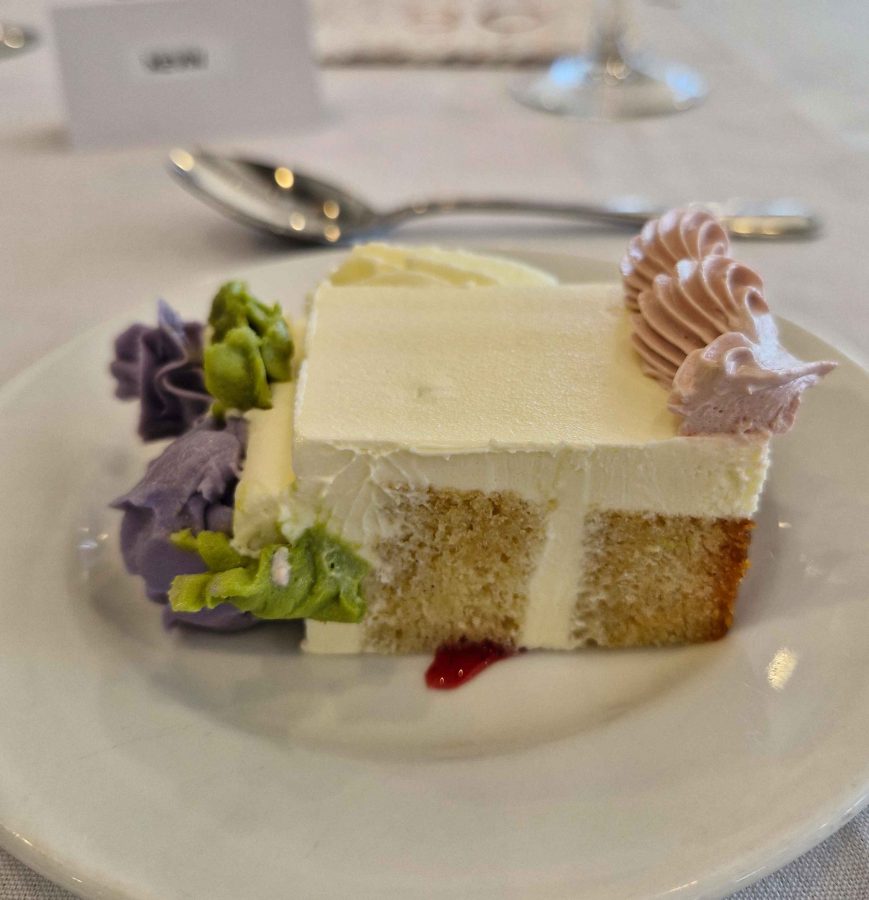
A short drive on Saturday morning brought us to the RSL Club in Ballina and the eightieth birthday celebration that was the gneisses of the whole trip south. It was a successful event. We renewed acquaintances with folk from our days in Melbourne who we have not seen for a very long time.
Next morning, with the family of our new eighty-year-old, we enjoyed the views over Shelly Beach from a café, as we shared brunch with visitors who had come to Ballina for the celebration. Suitably refuelled, we climbed back into the car for the last three hours of our trip.

